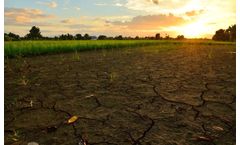Refine by
Soil Nitrogen Articles & Analysis
27 news found
Does going to the extreme in fertilizer application overcome yield limitations? When it comes to plant development and yield, imbalance is more likely to threaten soil health, production and your pocketbook. Instead, achieving nutrient balance is crucial to crop success. With that in mind, we reflect on the often-perceived conflicting theories – Liebig’s Law of Minimum and ...
Built in collaboration with Bayer's global sustainability team, the badge is awarded to farmers who score high on a sustainable farming practices survey which assigns a score to key farming practices such as no-tillage practices, reduced use of nitrogen, soil management or types of rotation crops. Farmers that do not receive the badge in the first place are ...
ByBayer AG
According to Lu, “Soil microbes catalyze most of the transformations of soil nitrogen into plant-usable forms. ...
Unlocking potential from your late-cut grass One of the secrets to unlocking the potential of late-cut grass is to remember that it is growing in different conditions to cuts taken earlier. A return to higher soil moisture levels will increase the availability of soil nutrients. Any extra nitrogen taken up will tend to buffer the effects of the ...
Unlocking the key to silvopastoral systems is especially important in Brazil. The tropical soil cannot support enough plant growth for grazing success. In order to grow enough forage for livestock, nutrients like nitrogen have to be added back into the soil. ...
The programme of field experiments, ‘Digestate & Compost in Agriculture’ (DC-Agri), confirms that food-based digestate - a product of anaerobic digestion - is a valuable source of readily available nitrogen; the single most important nutrient influencing crop yields. This new data will enable farmers to predict how much nitrogen the digestate ...
The development of sustainable agriculture requires making crops less dependent on fertilizer yet still able to produce high yields even when soil has less nitrogen. One research strategy has unfolded from the observation that plants are able to adapt to limited nitrogen intake. ...
Increased soil biodiversity can reduce nitrogen pollution, improve nutrient uptake by plants and even increase crop yields, new research suggests. The two-year study found that levels of nitrogen leaching from soil with an abundant soil life were nearly 25% lower than for soil with a reduced ...
The results showed that soil samples from more arid areas were associated with lower concentrations of carbon and nitrogen but higher phosphorus. The presence of carbon and nitrogen in the soil is linked to biological processes such as photosynthesis, nitrogen fixation by plants and decomposition of litter. ...
A large-scale research and development project has shown that giving farmers resources and advice on nitrogen fixation through legume plants can double yields and boost incomes in Africa. ...
The drop in nitrogen and carbon concentrations that occurs as soils become dryer could have serious effects on ecosystem services such as food production, carbon storage and biodiversity, according to the Nature paper published today. ...
Most of Africa’s rice is produced and consumed by small-scale farmers who are often constrained by challenging environmental conditions, such as nutrient-deficient soil, drought, and salinity. Soil nitrogen deficiencies in particular affect approximately 90 percent of African land used to grow rice and other crops. Access to rice varieties ...
All three fertility treatments were compared for their effects on soil biology, as well as on soil carbon, nitrogen, and acidity. The study assessed the diversity of the microbial functioning, rather than the variety of soil microorganisms. ...
Desert soil microbes could help halt desertification and boost agriculture in arid regions of the Middle East and North Africa, according to a study. Scientists from the United Arab Emirates [UAE] have isolated local salt- and drought-tolerant strains of Rhizobia, soil bacteria that fix nitrogen when they become established inside the root ...
Since 2009, Cereshas worked with USAID, which delivers economic and humanitarian assistance on behalf of the U.S. government, under a $3.0 milliongrant to increase rice yields, especially under stress conditions and on poor soils. Indiais expected to become the world's most populous nation, but its crop yields lag behind other countries at 58th in the world. ...
ByCeres
These studies have rarely provided any accurate data, and the ‘missing’ nitrogen has usually been attributed to denitrification, a process that removes nitrogen from soils by converting nitrate into nitrogen gas. High soil moisture, low soil oxygen, and sufficient ...
This is the first study to show a crop yield increase due to soil fauna in the field. "We believe there are two main reasons for the increase in yield. First, tunnels dug by ants and termites let more rain penetrate deeper into the soil where plants can access it, which also reduces runoff and evaporation. Second, the insects improve soil ...
Organic farming techniques emphasize safe, non-toxic, chemical-free methods that rebuild the soil, sequester carbon and nitrogen, promote biodiversity and create a healthier working environment for farmers, laborers, and surrounding communities. ...
Soil scientists studying bacterial communities in hardwood forests have found evidence that extra human-derived nitrogen deposited from the atmosphere can change the composition of the soil microbial community, with implications for carbon cycling and sequestration. Don Zak and Sarah Eisenlord from the University of Michigan conducted a study on ...
Such cover crops can contribute substantial amounts of nitrogen to subsequent crops, as well protect soils from erosion and promote overall soil quality. ...











